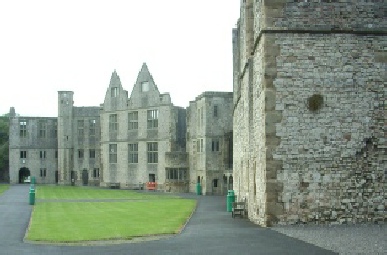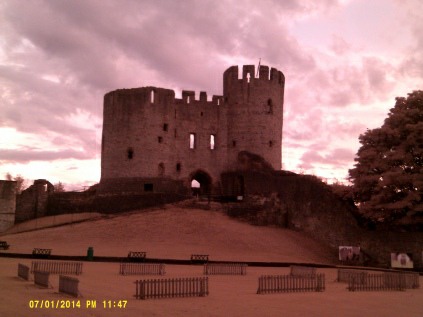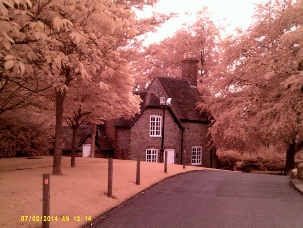

Contact Us
Email- membership@forgottenparanormal.co.uk
If you require help or advise about suspected haunting's please use the contact details below and we will gladly help where we can. We DO NOT charge for any advice or help that we provide and all information is kept confidential about you and the issues you have. For more information please email or call.
Email: Tim.watson@forgottenparanormal.co.uk
Mobile: 07818552830



Location: Dudley Castle
Address: Castle Hill
Dudley
West Midlands
DY1 4RA
Aprox. year Built: 1070
The History - According to legend, a wooden castle was constructed on the site in the 8th century by a Saxon lord called Dud. However this legend is not taken seriously by historians, who usually date the castle from soon after the Norman Conquest of 1066. It is thought one of the Conqueror's followers, Ansculf de Picquigny, built the first castle in 1070 and that his son, William Fitz-Ansculf, was in possession of the castle when it was recorded at the time of the Domesday Book of 1086. Some of the earthworks from this castle, notably the "motte", the vast mound on which the present castle keep now sits, still remain. However the earliest castle would have been of wooden construction and no longer exists. After Fitz-Ansculf, the castle came into the possession of the Paganel family, who built the first stone castle on the site. This castle was strong enough to withstand a siege in 1153 by the forces of King Stephen. However, after Gervase Paganel joined a failed rebellion against King Henry II in 1173 the castle was demolished by order of the king. The Somery's were the next dynasty to own the site and set about building the castle in stone starting in the second half of the 13th century and continuing on into the 14th. The keep (the most obvious part of the castle when viewed from the town) and the main gate dates from this re-building. A chapel and great hall were also constructed. The last of the male line of Somery, John Somery, died in 1321 and the castle and estates passed to his sister Margaret and her husband John de Sutton. Subsequently, members of this family often used Dudley as a surname. In 1532 another John Sutton (the seventh in the Dynasty named John) inherited the castle but after having money problems was ousted by a relative, John Dudley, later Duke of Northumberland, in 1537. Starting around 1540, a range of new buildings were erected within the older castle walls by him. The architect was William Sharington and the buildings are thus usually referred to as Sharrington Range. Dudley was later beheaded, for his attempt to set Lady Jane Grey on the Throne of England. The castle was returned to the Sutton family by Queen Mary, ownership being given to Edward Sutton. The castle was later visited by Queen Elizabeth I and was considered as a possible place of imprisonment for Mary, Queen of Scots. However, the Sutton family were not destined to hold the castle for much longer and Edward Sutton's son, Edward Sutton III was the last of the male line to possess the property. In 1592, this Edward sent men to raid the property of Gilbert Lyttelton, carrying away cattle which were impounded in the Castle grounds.[1] Financial difficulties continued to mount, however, until Edward Sutton III solved the problem by marrying his grand daughter and heir, Frances Sutton, to Humble Ward, the son of a wealthy merchant. The castle became a Royalist stronghold during the English Civil War, and was besieged twice before its surrender to Cromwell's forces in 1646. The first siege in 1644 was lifted after the Royalists sent a relief force which drove away the Parliamentarians. In 1646 Sir William Brereton commanded the Parliamentarians in the second siege against the Royalists led by Colonel Leveson. The castle was surrendered on 13 May 1646. Parliament subsequently ordered that the castle be partly demolished and the present ruined appearance of the keep results from this decision. However some habitable buildings remained and were subsequently used occasionally by the Earls of Dudley although by this time they preferred to reside at Himley Hall, approximately four miles away, when in the Midlands.

A stable block was constructed on the site at some point before 1700. This was the final building to be constructed in the castle. The bulk of the remaining habitable parts of the castle was destroyed by fire in 1750. However, in the nineteenth century, the site found a new use as a 'Romantic Ruin' and a certain amount of tidying up of the site was carried out by the Earls of Dudley. Battlements on one of the remaining towers were reconstructed and two cannon captured during the Crimean Wars were installed. In the nineteenth and early twentieth century the site was used for fêtes and pageants. In 1937, when the Dudley Zoo was established, the castle grounds were incorporated into the zoo. Despite being situated on the edge of Dudley town centre, the castle was situated within the borders of Sedgley -
which was part of neighbouring Staffordshire rather than Worcestershire - until the borders were changed to include the castle and its grounds within the Dudley borough in 1926, when restructuring of the boundaries took place to allow the development of the Priory Estate. The maps of Christopher Saxton drawn in 1579 and John Speed in 1610, mark Dudley Castle in the County of Staffordshire not Worcestershire

Dudley Castle was a great location with lots of activity throughout the night. Our investigation started with a mass vigil with the entire group in the Great Chamber area of the castle. In this vigil we had the presence of a young lady. Members of the group felt cold chills and could feel the presence of energy around them myself included. Our medium was aware of something around or near me but did not say any more than this at the time. We used one of the other young lades in the group to do a human pendulum with the spirit that was with her moving her body forward and back for Yes and No answers. We took it in turns around our circle to as the questions. The outcome was that it was a young girl that was killed by her father in on of the cottages. We also had loads of activity on the K2 meters that were located on the floor of the Chamber.
From here we split into three smaller groups, our group stayed in the Chamber area but moved into a different room. We started with the ouija board with little activity. However we did have activity on the K2’s. We had already done a sweep with a Mel meter to ensure there was no EM radiation in the area. It was at this point the medium explained that she had seen a figure step in front of me on the mass vigil, it was a tall man wearing military uniform. We then moved into another room where we had some knocks and bangs and some unexplained shadows.
After a short break we started the second vigil in the main entrance to the Chambers. We started with calling out and used a laser grid to try and see movement but after 30 mins with nothing apart from a few knocks from the room next door we moved back into the main Chamber. In here we made a circle with a K2 on the floor in the middle. This time the spirits wanted to talk. At first it was just random lights on the K2 and when I spoke we seemed to get nothing. Then we had one spirit come through that from my questions seemed to be the soldier from earlier that had been close to me on the first mass vigil. From our questions he was a soldier who was shot in Iraq and he was a Colour Sergeant. He seemed to have a link to the castle but we could not get much more information as the vigil came to an end. In our own time a few of us returned to the chamber after going to the top of the main towers which had a great view but we did not pick up any spirits. Back in the chamber this time was quiet with no spirits coming through. This was the same on our last vigil in The South-East of the Bailey. In here we had set out trigger objects and used an ouija board again with very little movement of the glass. Great night and well worth a visit.














